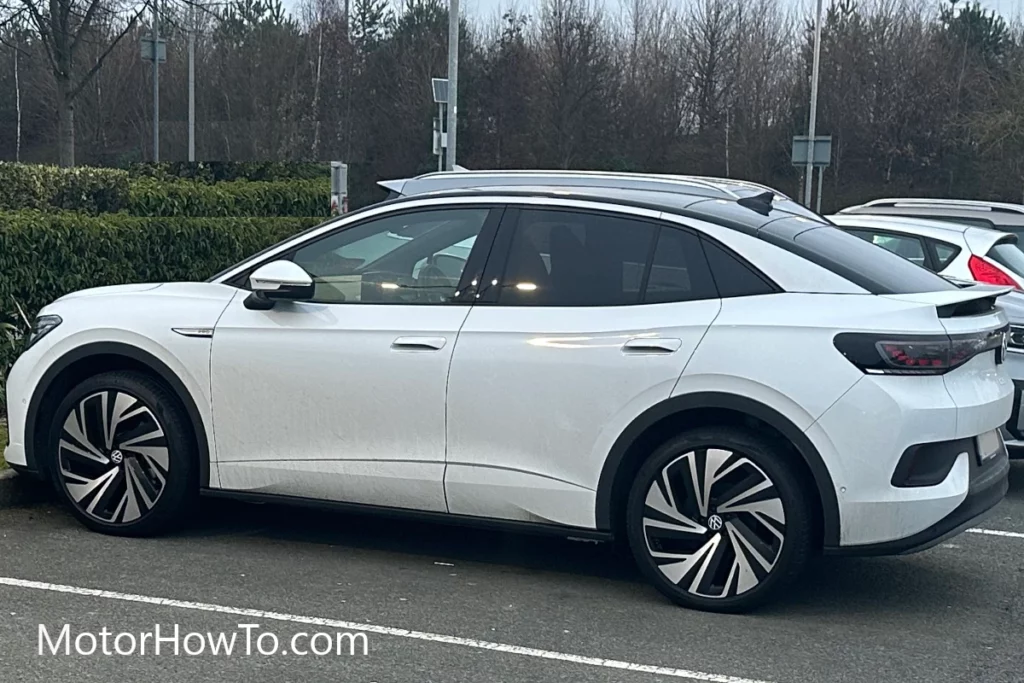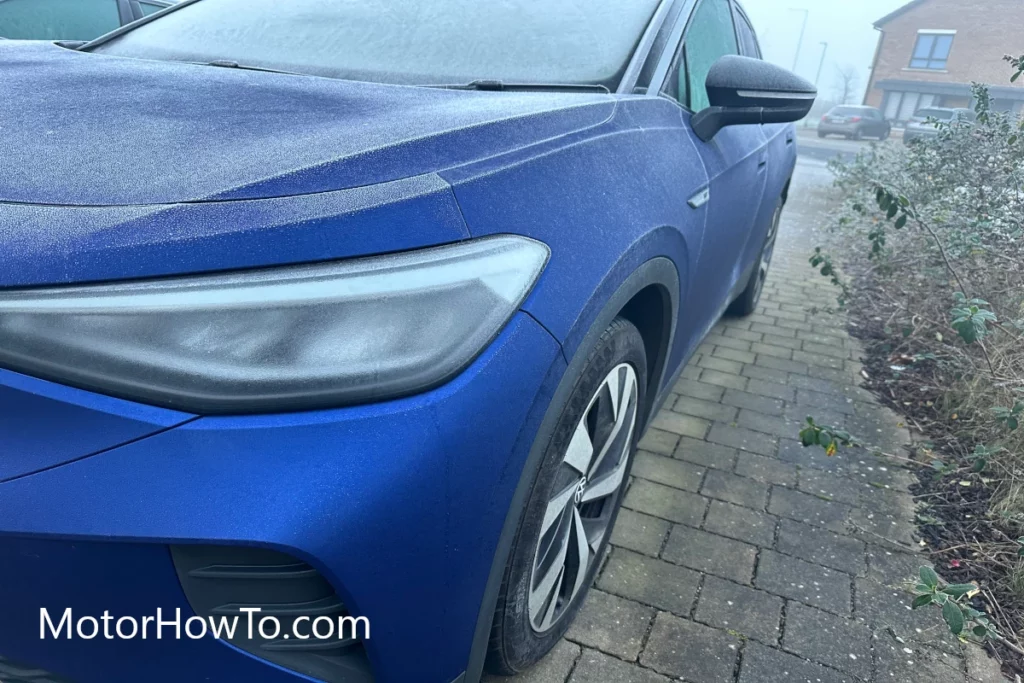The quest for tranquility on the road takes us down many avenues, one of which revolves around a comparison that’s been the subject of much debate.
Two popular contenders in the automotive world stand poised at the forefront of this dialogue, each promising a unique blend of features designed to cater to different driver preferences.
From the hustle and bustle of city streets to the serene calmness of long-distance drives, the influence of vehicle noise levels on the driving experience remains undeniably significant.
According to a comparison test by MotorTrend, the 2023 Honda CR-V Hybrid is a bit quieter inside than the 2023 Toyota RAV4 Hybrid, but both are excellent.
- The Honda CRV: An Examination of Interior Noise
- The Toyota RAV4: Delving into the Silence
- Factors Influencing Vehicle Noise: More Than Meets the Ear
- Comparing Apples to Apples: Same Conditions, Different Cars
- Personal Comfort: The Subjectivity of Sound
- Mitigating Factors: How to Reduce Noise in Your Vehicle
- Closing Thoughts
- Sources

So let’s delve into an in-depth analysis of these industry titans, without unveiling the verdict just yet, to provide a balanced comparison for our readers.
Related:
- Why is it Easier to Drive an SUV Than a Car? Exploring the Advantages of Elevated Command Seating
- Difference Between a Van and an SUV? Breaking Down the Essentials of Vehicle Design and Functionality
- Why Do People Call SUVs Trucks? Unraveling the Semantic Mysteries of Automotive Terminology
The Honda CRV: An Examination of Interior Noise

The Honda CRV, an established player in the compact SUV market, combines comfort and practicality with its well-thought-out design.
A key component of this appeal is the vehicle’s attention to acoustics. The CRV’s engineers have implemented strategic sound-dampening materials and insulation techniques throughout the vehicle’s construction.
This includes denser glass in the windows, additional insulation in the doors, and even specially designed tire tread patterns, all of which work in concert to provide a noticeably quieter ride.
Despite these efforts, however, the CRV is not without its noise contributions. While lauded for its efficiency and smooth operation, the vehicle’s continuously variable transmission (CVT) can generate a distinctive engine drone under heavy acceleration. Moreover, road noise can be perceptible, particularly on rougher surfaces or at higher speeds.
Nonetheless, these sounds are typically well-managed, and many drivers find them to be unobtrusive in the context of daily driving. Therefore, the CRV’s overall noise profile perfectly balances effective sound control and unavoidable mechanical noise.
The Toyota RAV4: Delving into the Silence

The Toyota RAV4, a stalwart in compact SUVs, brings its blend of serenity to the open road.
Toyota’s commitment to tranquility within the cabin manifests in several thoughtful design choices. Noise-absorbing materials are strategically placed throughout the RAV4, from the floor to the ceiling, and even in the wheel wells.
The vehicle’s acoustic windscreen also serves to dampen the roar of the wind at higher speeds.
Furthermore, the RAV4’s transmission, whether you opt for the traditional automatic or hybrid model, is designed to minimize intrusive noises.
Yet, the RAV4 isn’t entirely immune to the realities of automotive noise. Some drivers have noted a moderate engine growl when accelerating, a characteristic not uncommon among vehicles of its class. Also, road noise can enter the cabin, particularly on coarse or uneven surfaces.
However, the overall noise levels are generally well-regulated, resulting in a largely serene driving experience. Like the CRV, the RAV4 strikes a careful balance, aiming to isolate the cabin from unwanted sound while acknowledging the inherent noises of a combustion-engine vehicle.
Factors Influencing Vehicle Noise: More Than Meets the Ear
The noise level inside a vehicle is influenced by a complex interplay of factors, some of which may be surprising. Let’s explore the main contributors beyond the apparent source of sound – the engine.
One key factor is the vehicle’s transmission system. Different types of transmissions produce different noise levels. For instance, continuously variable transmissions (CVTs) can produce a distinctive drone during heavy acceleration, while traditional automatic transmissions may generate less noticeable noise.
Aerodynamics is another critical component. The vehicle’s design can either promote or dampen wind noise, depending on how effectively it streamlines airflow. Elements such as side mirrors, roof racks, and the vehicle’s shape can significantly impact wind noise.
Tires are also essential players in the sound symphony of a car. Tire tread design, type, and even the inflation level can contribute to noise. Rough tread patterns or underinflated tires can increase road noise, impacting the overall tranquility inside the cabin.
The car’s insulation plays a significant role as well. Sound-dampening materials in the vehicle’s construction can help isolate the cabin from external noises. These materials can be found in the doors, roof, floor, and windows’ glass.
Lastly, the type of surface you’re driving on can drastically affect the noise inside your vehicle. Driving on smooth asphalt is generally quieter than on rough concrete or gravel roads. Even within the same surface type, variations in maintenance and quality can lead to different noise levels.
A vehicle’s noise level results from an intricate balance of numerous factors. Understanding these can help drivers make informed decisions and manage their expectations regarding the noise levels in their vehicles.
Comparing Apples to Apples: Same Conditions, Different Cars
In pursuing a fair comparison between the Honda CRV and the Toyota RAV4, ensuring that the conditions under which the vehicles are assessed remain consistent is crucial. This allows us to compare the cars in a like-for-like setting, mitigating variables that could unfairly sway the results.
When evaluating the noise levels of these vehicles, one should aim to test them under the same road and weather conditions.
This means assessing the cars on the same type of road surface (e.g., asphalt, concrete), during similar weather patterns (e.g., dry, rain), and at comparable speeds.
Additionally, testing should occur without extraneous noise contributors such as radios, air conditioning, or open windows, which can significantly impact the perceived noise levels inside the car.
Another aspect to consider is the condition of the vehicles being compared. Factors like the car’s age, wear and tear on the tires, and the condition of the vehicle’s insulation can all influence noise levels.
Ideally, the CRV and the RAV4 being compared should be of similar age and in a similar condition to ensure an equitable evaluation.
Lastly, it’s essential to remember the subjectivity of noise perception. What one person finds quiet or noisy can vary significantly from another person’s experience. Therefore, while objective measurements can provide a valuable benchmark, individual test drives under similar conditions are crucial for comprehensively understanding which vehicle offers a quieter ride.
Personal Comfort: The Subjectivity of Sound
Sound, much like beauty, can often be in the ear of the beholder. The concept of noise is inherently subjective, and what one person finds soothing or unnoticeable, another might deem irritating or intrusive.
This subjectivity plays a significant role when comparing the noise levels of vehicles such as the Honda CRV and Toyota RAV4.
A variety of factors can influence the perception of noise.
Individual auditory sensitivity, previous experiences, expectations, and context can shape how one interprets sounds. For instance, some people might find the low hum of an engine reassuring, while others may prefer the near silence offered by electric cars.
Moreover, the sound composition itself can also affect our perception. A vehicle might have a relatively high decibel reading but still, be considered quiet because the sounds it produces are at frequencies that are less noticeable or bothersome to the human ear.
Conversely, a car might be deemed noisy even with a lower decibel level if the sounds it generates are at more irritating frequencies.
Hence, while laboratory tests and professional reviews can offer valuable insights into a vehicle’s noise level, personal experience is key.
The best way to determine which vehicle—the CRV or the RAV4—offers the most comfortable noise environment is by taking them for test drives under your typical driving conditions. Can you truly understand how the vehicle’s acoustics align with your comfort and preferences?
Mitigating Factors: How to Reduce Noise in Your Vehicle
You can employ several methods to reduce noise levels in your vehicle, enhancing your overall driving experience. Many of these strategies can be implemented relatively easily, often not requiring professional intervention.
The first step involves addressing the external factors contributing to the noise. This includes regularly checking and maintaining your tires. Properly inflated tires with a smooth tread pattern can significantly reduce road noise.
Similarly, removing unnecessary exterior accessories, such as roof racks, when not in use can reduce wind noise by improving the vehicle’s aerodynamics. Lastly, regular servicing of the engine and transmission can minimize mechanical noise.
- Regular tire checks: Ensuring your tires are correctly inflated and replacing them when their tread begins to wear can drastically reduce road noise.
- Minimize external accessories: Items such as roof racks can create wind noise. Remove them when not in use to enhance your vehicle’s aerodynamics.
- Regular servicing: Keeping the engine and transmission in good shape helps reduce mechanical noises. Regular oil changes and servicing can ensure smoother, quieter operation.
In the vehicle’s interior, installing additional sound-dampening materials can be an effective way to reduce noise. This can include adding insulation to the doors, floor, and roof or upgrading to acoustic glass for the windows. Furthermore, maintaining a clean and clutter-free vehicle can reduce noise, as items rolling or rattling around can contribute to the overall noise level.
- Install sound-dampening materials: Additional insulation in the doors, floor, roof, and acoustic glass, can help keep external noises at bay.
- Keep your vehicle clean: A clutter-free vehicle can be a quieter vehicle. Loose items can create noise while driving, so keeping the interior tidy can help reduce unwanted sounds.
Closing Thoughts
In conclusion, the comparison between the Honda CRV and the Toyota RAV4 in terms of noise levels presents an interesting dialogue. Both vehicles are equipped with technologies and design features aimed at creating a quieter driving experience, but neither is entirely immune to the realities of automotive noise.
Understanding the factors influencing vehicle noise, including transmission type, aerodynamics, tires, insulation, and road surface, is essential for assessing and managing noise levels effectively.
A fair comparison between these two vehicles necessitates testing under consistent conditions, taking into account variables like road surface, weather, and vehicle condition.
However, it’s vital to remember that noise perception is inherently subjective. What might be considered quiet or noisy can vary significantly from one individual to another.
Personal comfort plays a pivotal role in evaluating the overall noise experience, making it crucial for potential buyers to take test drives under typical driving conditions to assess which vehicle aligns best with their preferences.
Lastly, there are practical steps individuals can take to reduce noise in their vehicles, such as maintaining proper tire inflation, minimizing exterior accessories, performing regular vehicle servicing, and adding sound-dampening materials to the interior.
By combining these efforts with a comprehensive understanding of vehicle noise dynamics, drivers can create a more serene driving environment tailored to their comfort and preferences.
Sources
2023 Honda CR-V Hybrid vs. Toyota RAV4 Hybrid Comparison Test: Practical Considerations
Comparison: 2023 Honda CR-V Hybrid vs 2023 Toyota Rav4 Hybrid



